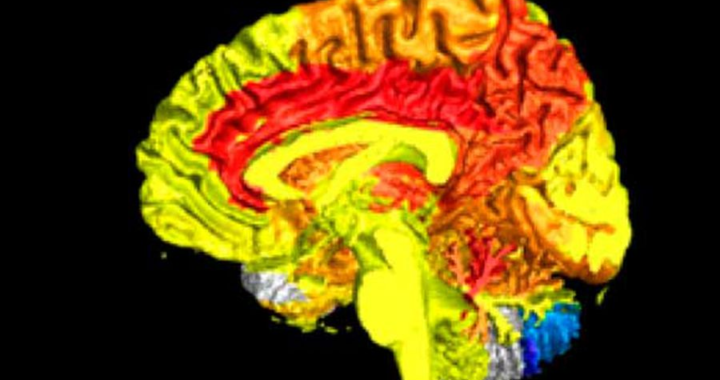When we torture the data until it confesses, we should be wary of the stories it is telling us.
Dangerous Questions
Table of Contents
My son introduced me to an article by nom-de-plume Wael Taji in Quillette entitled, “The Dangers of Ignoring Cognitive Inequality”.
“Dad,” he asked me. “Do you believe people’s intelligence is determined by nature or nurture?”
The politically-charged war over the heritability of intelligence by both “anti-hereditarians” and “hereditarian” social scientists — who each reject each others’ strawman labels for the other — is acrimonious and confusing. It is filled with seething polemics barely concealed by academic decorum. Reaching common ground is frustrated by a plethora of thought experiments, pedantic arguments over word definitions, soft prejudices, motivated reasoning, and rhetorical mathiness. As University of Virginia psychologist Eric Turkheimer succinctly describes the dispute:
“The hereditarians want to be seen as scientific so they aren’t seen as racists; the anti-hereditarians want to be scientific so they aren’t seen as frightened by socially difficult scientific findings.”
In this essay, I seek to abolish the nature OR nurture question of intelligence altogether. I will try to show both nature AND nurture are part of a complex interconnected system that determines what people commonly mean by intelligence. I will contrast this with both the Taji position and also the position of social psychologists like Eric Turkheimer. I will take a scorched earth approach to IQ as a purported measure of a measurable construct called intelligence. Along the way, I will challenge the methods of field experts that purport to possess insight into the nature vs. nurture question about intelligence, methods that I call Queteletan.
The Dangers of Politicized Science

Turkheimer is a social psychologist and one of the willing proxy instruments of Vox editor Ezra Klein’s orbital bombardment of the reputation of author and podcaster Sam Harris. In a recent blog post, Turkheimer laments the lack of progress on the nature vs. nurture issue over the course of his career:
“…everyone is stubborn. One thing I actually have in common with Charles Murray is that (as he notes about himself in the podcast) I haven’t changed my mind about much on this topic over a thirty-year career.”
What one should draw from this is that the underlying substrate of intelligence is unlikely to be found by social scientists, who too often devolve into opposing factions engaging in what anti-philosopher Ludwig Wittgenstein indicted as “language-games”. Opposed to mainstream social scientists are activists in evolutionary biology and evolutionary psychology. Many of these practitioners muse about the nature of humanity in an allegorical format that pays homage to natural and sexual selection principles, as if the use of the narrative style of appealing to evolutionary mechanisms by itself raises their meditations’ empirical stature to the level of scientific experiment.
The Dangers of Queteletan Biometrics

Intelligence is inevitably the result of a highly-interconnected mosaic of nature and nurture. This seems to be agreed by all sides. I am concerned that Taji’s article handed some undeserved ammunition to those who call themselves “race realists”, who cherry-pick data as justifications for what they believe are innate “average” differences between members of the socially-constructed concepts of ethnicity. This is received by many people as unhelpful to social progress, and perniciously conflates biological ancestry with socially-constructed ethnic groups. This error, consciously or not, gives unearned credence to oppressor narratives as part of the “natural order” ordaining their power over oppressed groups.
Initially, Taji sets up his piece with the story of the worst mass-killing in Australian history, concluding “the most notable and concrete fact of Bryant’s psychological condition was his extremely low IQ of 66 — well within the range for mental disability”. This is no different than any of the other polemics that scapegoat the entire class of people when one member commits a crime: Muslims, immigrants, blacks, whites, gays, men, and right-wing zealots. The reader is now vulnerable to believing that this class of “low IQ” people are the problem behind this outrage. Scott Adams might muse that this is “good persuasion” but as intelligent adults we should have the presence of mind to be immune to obvious rhetorical manipulations like this. Besides, we know some of the most frightening serial killers have been highly intelligent: Rodney Alcala, Ted Bundy, Kristen Gilbert, Andrew Cunanan, and Ted Kaczinsky were all measurably brilliant people. Intelligence is not an antidote to madness; indeed, they often seem to go hand-in-hand.
Taji goes on to describe the methods of IQ tests. Defining intelligence is exceedingly hard. IQ was originally an attempt to empirically measure intelligence independent from education, but studies have shown that education improves IQ. Humans from primitive tribes usually perform poorly on Western-designed IQ tests, but this is because such tests are almost invariably biased by hidden educational requirements they have not been exposed to. There is no reason to believe that humans from primitive tribes are cognitively handicapped, as their IQ test scores would otherwise indicate. This is a defect in the IQ testing of psychometrics, not evidence for the trope of Darwinian selection for intelligence in “civilized” ancestry lines.
On the other hand, the impact of education may mainly be realized in a specific area of the brain that is a hub for semantics (left anterior temporal lobe), which may explain the stereotype of the pedantic scholar who clings to sophistry that has no support in the real world. Perhaps this is a neural correlate of the IYI (Idiot Yet Intellectual) epithet wielded by Nicholas Nassim Taleb. Indeed, damage to this brain area has been observed to unlock latent creative genius. We are able to locate other cognitive competencies to particular areas of the brain, such as musical knowledge, poker skill, mathematics, and humor creativity. Education, or more accurately our pedagogical methods, may have counterproductive downsides — as widely-observed by teachers and sagely observed by Pink Floyd. These neuroscience studies are largely unexplored in the cloistered realms of intelligence and education research.
Quantitative genetics searches for genes that might be selected for IQ (or acadamia’s favorite hubristic IQ proxy, “educational attainment”) have come up null. That is not to say that many genes ultimately contribute to performance on IQ tests and life achievement, because they certainly do. We simply do not have an understanding of the higher-order interactions between nature and nurture. IQ psychometric testing is seductive because it provides the illusion of empirical objectivity, but underneath things are far too muddled to be using it to divide people into Brave New World castes. Surely this was the cautionary message that Aldous Huxley intended to convey in his most famous book.
IQ is a score on a test, an attempt to summarize the “quality” of a mind in one neat number, and it is only as good as the test design. Psychology has long recognized the “confound” issues with IQ psychometric as a valid measure of nature vs. nurture. Psychologist Charles Spearman imagined a new number, called the g factor (general intelligence factor), to represent the “true, innate” intelligence that lurks obscured inside the nominal IQ test measurement. People who do well on one type of mental task, such as vocabulary, tend to do well on other tests, such as memorizing digits, within a certain variance. By combining a number of separate cognitive tests together, and using a statistical technique called factor analysis to try to extract meaningful correlations, we can get a number that has been demonstrated to be more predictive in the real world than IQ.
Spearman’s student, Raymond Catell, rejected the unified g in favor of two variables, fluid intelligence (Gf) and crystalized intelligence (Gc) (later expanded with quantitative reasoning (Gq) and visual-spatial reasoning (Gv)). Later still, John B. Carroll created a hierarchical structure with a master g factor at the top, eight subcategories, and myriad tertiary categories.
All of this psychometric numerology provides a certain illusive feeling of rigor and symmetry, as with the Noble Eightfold Path of Buddhism, but the derived g factor does not escape the fundamental problem of intelligence: we cannot tie it to any observable except performance on behavioral tests designed by researchers; tests that introduce various uncertainties. As Matthew Panizzon and Eero Vuoksimaa of UCSD put it:
“Although we provide evidence in favor of g being a valid latent construct, it is still the case that we do not know if g is a causal individual differences construct with respect to specific cognitive abilities. If one interprets the higher-order common pathway model from a top-down perspective, it would seem to imply that g is indeed a causal individual differences construct. However, this model is not directional, and it can also be explained by models that do not include a g factor, such as the mutualism model (van der Maas et al 2006). In the mutualism model, g is an emergent property of the positive manifold among specific cognitive abilities rather than a construct that causes the relationships among cognitive abilities. “
In other words, g seems to be a good heuristic indicator of intelligence. However, it is not a real attribute that is causally-related to any discernible characteristic differences between individuals. Reifying IQ or g factor into something real is a logical fallacy. We are left no closer to resolving the nature OR nurture question, but I hope this makes the reader smarter about our ignorance of intelligence.
The Dangers of Jeff Foxworthy Medicine

Taji identifies Conduct Disorder (CD) and Antisocial Personality Disorder (APD) as being associated with low IQ. I do not buy Taji’s putative causal relationship between a reified IQ and mental disorders. Low IQ is not the “intrinsic” property that causes mental disorders; both personality disorders and low IQ are common symptoms of brain abnormalities. These may be due to poor nutrition, an unenriching environment, chronic stress — all factors very much impacted by socioeconomic stratification. At the same time, there are also strong genetic heritability for particular types of conditions. But the correlation between low IQ and CD/APD is not causation.
It is helpful to remember that these personality disorders are defined by a list of behavioral symptoms agreed to by a consensus of psychiatry committees. While psychiatrists have long attempted to classify the many patients the field has treated over its history, the categories shift over time as the field and committee members change. At the risk of drawing ire from the psychiatry community, the modern pantheon of personality disorders are rather analogous to comedian Jeff Foxworthy’s diagnostic method, “You May Be a Redneck If”. They are not diseases in the physiological sense, but another set of abstract concepts that have been reified into medical conditions (in many cases, to the financial benefit of the pharmaceutical industry). In summary, linking a highly summarized empirical measure (IQ) to consensus-defined behavioral diseases (personality disorders) weakly supports Taji’s case for setting policy around the IQ disadvantaged.
With that caveat established, neurological studies have identified personality disorder associations with particular brain phenotypes, early childhood experience, and in some cases, genes. For example, murderous psychosis seems to often result from damage to a part of the brain called the gyrus rectus, or its inputs. Early childhood trauma has been shown to have physical effects in the brain and the epigenetic expression of genes. Here the inseparability of nature and nurture is clear.
Mental disorders have increasingly been found to have medical causes. The gut bacteria flora, which are heavily controlled by diet and environmental stress, have recently been found to have myriad effects upon the body and brain. Diet is very much impacted by socioeconomic stratification. Exercise has major benefits for the brain, including stimulating neurogenesis, and there is a discrepancy in sports availability along income and gender lines. Long-term stress has many mental health effects, and teachers who teach in underprivileged communities universally attest that children are ill-prepared to learn in school when they are stressed at home. Both IQ and mental health are linked to body health, and ultimately healthy environments, which are clearly related to socioeconomic status.
Psychiatry grapples with some very difficult problems involving the human mind. The grand conjectures of Freud and Jung have been superseded by committee consensus conventions. However, we must remember that diagnostic personality disorders, as with IQ and g factor, are based upon conventions and subjective clinical assessments, not physiology. Psychiatry cannot successfully tease apart nature and nurture.
The Dangers of Gene Myths

In genetics, the MAOA gene, which is passed down on the mother’s X chromosome, has variants (R2 and R3 alleles) that show up disproportionately in violent male criminals. It’s the closest story we have to a “bad seed”. The wounds of childhood trauma can now be observed physiologically in the brain, and some people may be genetically vulnerable to this.
However, MAOA R2/R3 does not explain most violent criminals, and the vast majority of people carrying MAOA R2/R3 are fully-functioning people. But this inconclusive discovery was sensationalized in the media, and “the warrior gene” unjustly became a race realism story in precisely the manner that frustrates Turkheimer. In reality, MAOA does not provide a convenient story to justify racial stereotypes:
“MAOA-3R — the “original warrior gene” — was the first gene linked with antisocial characteristics. But Maori were not the only ethnic group with a high frequency of this variant. It turned out that while 3R was found in 56% of Maori males, it occurred in 58% of African American males and 34% of European males [2]. Misinterpreted by the media, the 3R variant quickly became a lead character in a pop science narrative intended to explain why certain racial groups appear to have increased tendencies toward violence. When a disproportionately high number of males of an ethnic group carries a less common gene linked with aggressive behaviors, the discussion about that gene immediately takes on racial overtones [3, 14]. (Interestingly, the press ignored studies indicating that the 3R variant occurred in 61% of Taiwanese males [15] and 56% of Chinese males [16]).”
The key takeaway here is the neophyte level of knowledge that we have about genes does not warrant any sort of Darwinist social policy framework based around optimizing the human genetic code — we would not know what genetic alleles to select for even if we wanted to. We know of no genetic differences between the popular conception of “races” that explain any racial behavioral stereotypes. Media writers should take care to neither foment race realism, nor portray an unscientific blank-slate position that genes contribute nothing to intelligence as a scientific view.
The Dangers of Statistical Inferencing

Let us identify what is contemptuously called “scientific racism”. The Pioneer Fund is an organization that was headed by J. Phillippe Rushton until his death in 2012, and now appears to be headed by Richard Lynn. Its charter dedicates the fund to “race betterment”. It funds heritability research, and has been accused of being sympathetic to “white supremacy”. I am going to briefly review just one paper by Richard Lynn.
In evolutionary biology, r/K selection theory proposes that organisms tend to adopt reproductive strategies that either emphasize having many offspring with low parental involvement in rearing (r) or fewer offspring with high parental involvement in rearing (K). Lynn describes Rushton’s application of r/K selection as follows:
“…Rushton has proposed that Mongoloids have evolved the strongest K strategy, Negroids are stronger r strategists, while Caucasoids fall intermediate but are closer to Mongoloids. Rushton uses this general theory to explain a large number of differences between the three races including brain size, intelligence, sexuality and numbers of children.”
This speculation is unsubstantiated, offensive, and plainly presumes dubious racial generalizations in the thinking of Rushton and Lynn. However, it illustrates a broader problem with evolutionary biology, which is that its rhetorical style can be adapted to lend scientific-sounding credibility to just about any specious political argument. Lynn further reports:
“The relation between skin color and intelligence was examined in a representative sample of 430 adult African Americans. A statistically significant positive correlation of 0.17 was obtained between light skin color and intelligence. It is proposed that the result supports the hypothesis that the level of intelligence in African Americans is significantly determined by the proportion of Caucasian genes.”
This conclusion, that because skin color is genetically determined, then the same genes somehow affect intelligence, is absurd. There are no “Caucasian genes” rigidly defining whiteness boundaries — there are merely genetic variants that appear more frequently in different populations. There is no scientific reason to believe that skin color genes are even indirectly related to intelligence as a result of “admixture” of socially-constructed white and black groups. Occam’s Razor demands that we first consider racial bias to explain any correlations between IQ and skin color. But through the magic of what is known derisively as p-hacking, Lynn finds them to be correlated in a statistically significant way.
This is another example where quantitative methods, especially those that purport to compute the probability that the author’s conclusions are wrong, should be eyed suspiciously. Methods that seem to provide validation of “politically correct” social sciences narratives create outrage when co-opted to support abhorrent narratives. Some of that outrage ought to be channeled towards questioning the methods themselves.
When we torture the data until it confesses, we should be wary of the stories it is telling us.
The Dangers of Politicized Science
Both Galileo and Darwin were persecuted by the religious establishments of their times because their ideas were thought to threaten extant social beliefs. There is a current teaching among activist progressives that long-suffering oppressed classes can take power if only the oppressor classes did not actively maintain their systemic power dominion. These progressives seem to eye genetic studies of ancestry suspiciously, pointing to historical prejudiced race science and eugenics programs as cautionary slippery slopes leading to the oppressors maintaining unjust power. Although I am not devoting much space in this article to Eric Turkheimer, whose objections to the Pioneer Fund circle are well-founded, I wish to dissent on a specific theme of his:
“Now have a look at the Rushton and Jensen paper making the case for the partial genetic determination of racial differences, or listen to Murray and Harris, or read any of the replies to our piece in Vox. Where are the percentages? Where is the equivalent of the ACE model? Where are the structural equation models with parameters quantifying the “partly genetic and partly environmental” hypothesis the hereditarians keep repeating? For all the hereditarians’ idle intuitions about differences being part genetic and part environmental, where is the empirical or quantitative theory that describes how this apportioning is supposed to work? There is no such thing as a “group heritability coefficient,” no way to put any meat on the speculative bones about partial genetic determination. In the absence of an actual empirical theory, the discussion is all about your intuitions against my intuitions.”
Let us now talk about a gene highly conserved across mammals, FOXP2. This gene created a big stir in 2001. Mutations in FOXP2 can cause human language disorders. Replacing the mouse FOXP2 gene with the human equivalent dramatically changed their cognitive and vocal behavior, in an experiment reminiscent of Daniel Keyes’ short story Flowers for Algernon. FOXP2 is heavily expressed in the left inferior frontal gyrus, a brain area central to language articulation. On the other hand, few connections between particular FOXP2 alleles and high verbal intelligence have been found. What we can say is FOXP2 is that it appears to contribute to verbal intelligence. Many other genes have intriguing connections to intelligence. We do not understand all of this, but have tantalizing glimpses of insight.
Returning to the social sciences, Turkheimer is correct that there is no model linking the social construct of race to particular gene variants that are better or worse. However, it is not unreasonable to suppose that as science untangles the genetic milieu, we may find gene variations involved in cognition that are distributed differently amongst populations with different ancestries. No one can presently meet the Turkheimer Legitimacy Criterion — a mathematical theory that models genes-to-g — because biology appears to be computationally irreducible, and g or any “group heritability coefficient” are highly reified concepts disconnected from this underlying biology. But surely the extreme Turkheimer Legitimacy Criterion does not delegitimize free inquiry into ancestry and intelligence, due to the fear that someone may derive false myths from its results!
This was the central point that Sam Harris felt needed to be made in the case of Charles Murray, whose Bell Curve work drew partly from the aforementioned Richard Lynn’s research. Harris made this principled stand at great personal reputational cost. He tried to justify his defense of the spirit of free inquiry into truth in an appeal to Ezra Klein for two hours on his podcast. This appeal was in vain, as Klein could not be moved from his rhetorical talking points about the historical injustices of bad racial theories past, and postmodernist counseling of Sam Harris to reflect upon his inherent unconscious biases that stem from his white privilege.
Wokeness is a peculiar kind of sonambulance.
The Dangers of Ignoring Divergent Brain Morphology
Genetic studies indicate that the Australian Aboriginal people have been isolated from the rest of humanity for the past 50,000 years. Both anecdotally and in studies, indigenous Australians on average have superior eyesight to Australians of European origin. There are indications that Australian Aborigines on average have a larger occipital lobe of the brain, which is the primary location where visual perception is processed. There is an evolutionary hypothesis that the harsh Australian outback environment with flat, wide open spaces selected for increased visual acuity to find food and water. If indeed we were to find genetic factors behind these adaptations, what would this mean for the popular political science conflict theory doctrine that posits the only differences between “socially-constructed” human ethnic groups is organized political power? We have to be ready for this conversation, which I believe was the central point of both Taji’s article and why Sam Harris waded into the debate on principle.
Dangerous Conclusions
If you made it through this article, you may have found that I evaded your labels. Do I believe in IQ or don’t I? Perhaps you wanted me to come out as a race realist, or as a evolutionary biologist-philosopher who believes that genes mean nothing and group political power is everything? We have to make sense of all of these views, and be able to discuss them no matter where the science leads, even at the risk of calling into question our religious and political beliefs. With all due respect to Ezra Klein and Eric Turkheimer, it is possible to examine issues sincerely and dispassionately as critical thinking individuals without being tainted by the Original Sin of group identity neologisms. We also must take care not to speculatively misuse genetics to explain outcomes where socioeconomic issues loom first and foremost, which is the central issue I have with Taji’s article. We should hear out and earnestly critique the eugenics-era holdovers of the Pioneer Fund, who comb through statistical data as if they were chicken entrails, hoping we might purify the human genome of contaminants — an erroneous framing of the genome long-disproven by the Human Genome Project of the 1990s.
USC electrical engineering professor Bart Kosko wrote a book called Fuzzy Thinking in which he described Western thought as being obsessed with P OR NOT P, whereas Eastern thought is more interested in harmonizing P AND NOT P. It has turned out that nature OR nurture is not even a valid question with respect to shaping individual intelligence; we must instead learn to look dispassionately at nature AND nurture together as a living system.
My son peered at me quizzically. “So do you believe in nature or nurture?”
“No. And neither should you.”





